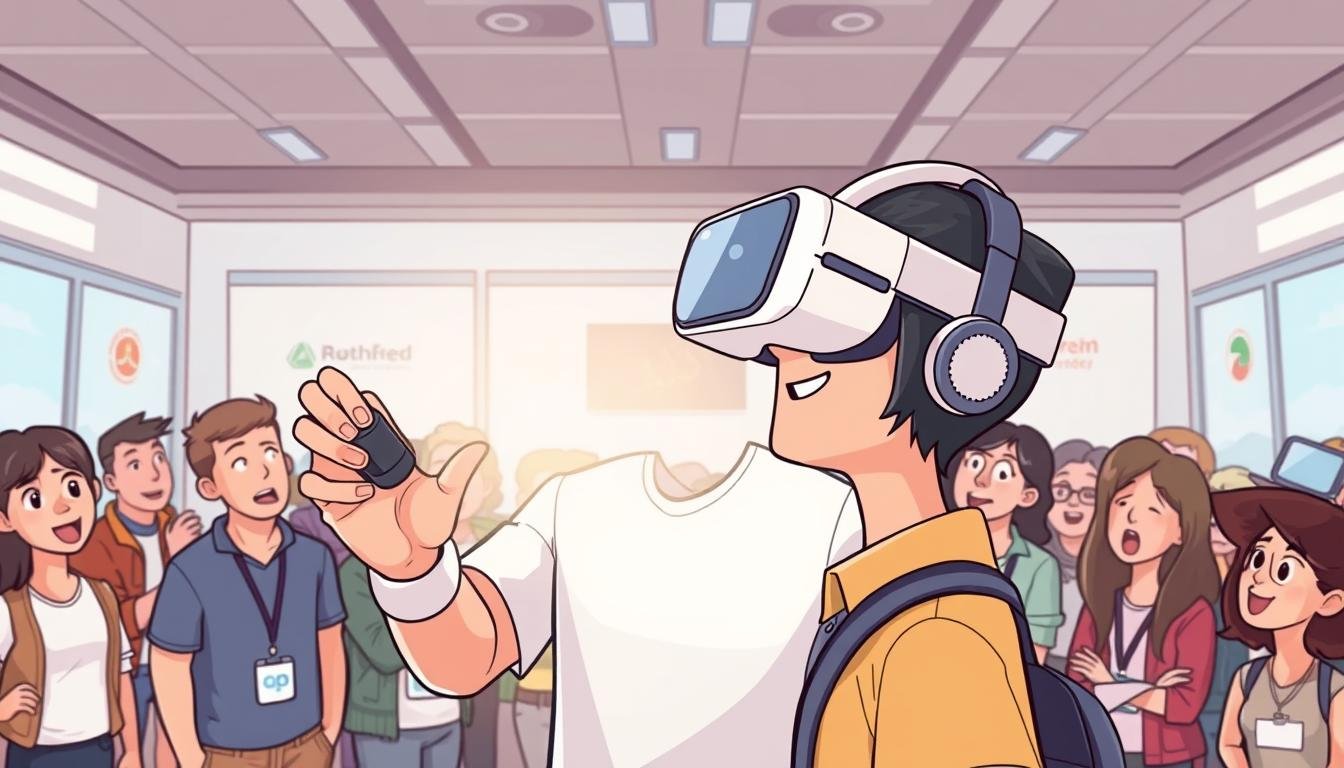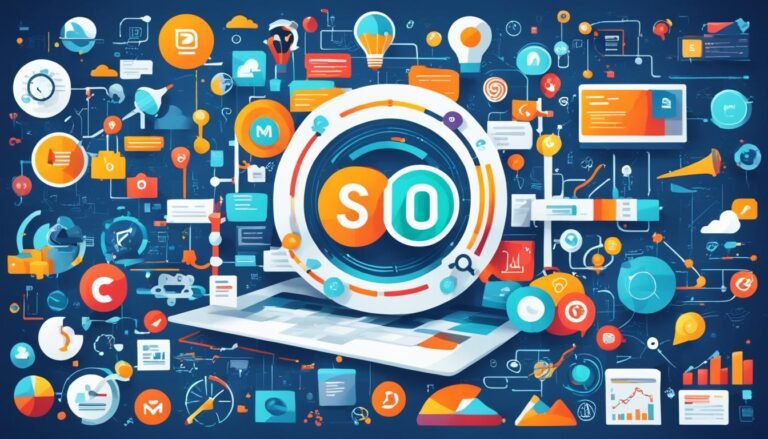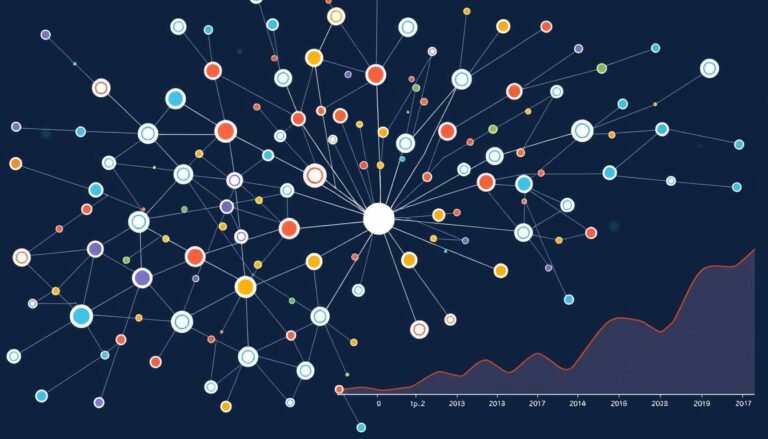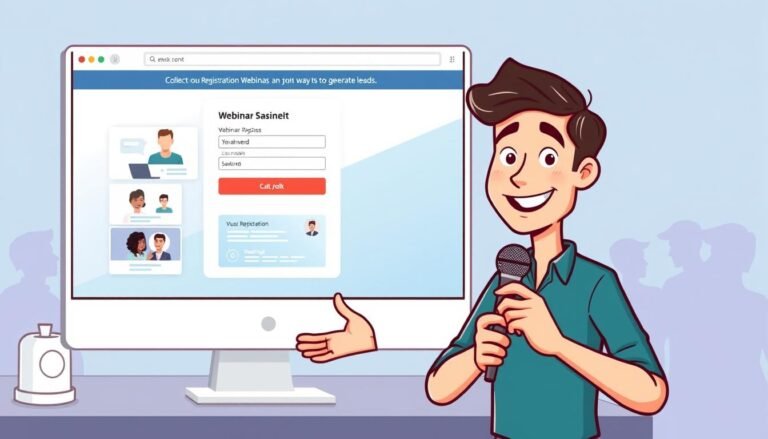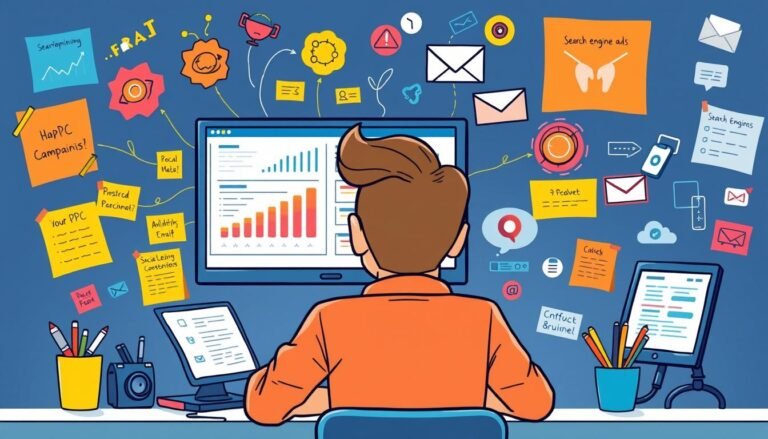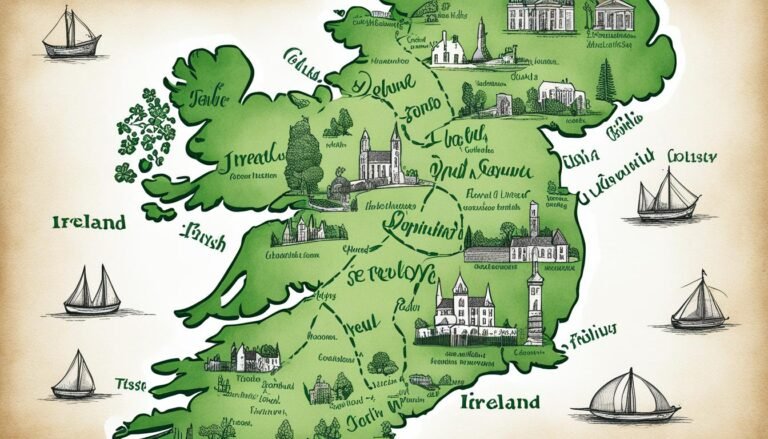How to Use Virtual Reality in Marketing
Did you know that 51% of companies are now using or planning to use virtual reality in their marketing? This shows how big of an impact VR is having on how brands connect with customers. With online shopping making up 16% of all sales in the US, companies are looking for new ways to make shopping fun and engaging. Learning how to use virtual reality in marketing is key to reaching customers in a new way.
In 2024, using VR in marketing could really boost how people see a brand. It can make customers feel like they’re part of something special. Brands like Volvo and Ikea are already doing this with cool VR experiences. As more people want VR, knowing how to use it can help a brand stand out and improve marketing results.
Key Takeaways
- Over half of companies are integrating virtual reality into their marketing strategies.
- Virtual reality marketing enhances brand engagement through immersive experiences.
- Innovative examples like Ikea and Volvo illustrate the potential for effective VR campaigns.
- The e-commerce sector continues to grow, making VR a valuable tool for marketers.
- Understanding VR capabilities is essential for businesses to stand out in competition.
Understanding Virtual Reality Marketing
Virtual reality marketing is changing how brands talk to customers. It uses VR tech for interactive experiences. This lets users dive into unique worlds. Brands can show off their products in a new way, making people more loyal.
The Concept of VR Marketing
At its heart, VR marketing creates immersive marketing with VR experiences. These experiences touch consumers deeply. Brands use the latest tech to connect with people on an emotional level. Studies show people are more likely to buy from VR-using brands, seeing them as forward-thinking.
The VR software market is expected to hit $19 billion by 2021. This shows how popular VR marketing is becoming.
Different Forms of VR in Marketing
VR in marketing comes in many forms, each with its own goal:
- Virtual Tours: Great for real estate, these tours let people see properties in detail. This helps buyers and sellers alike.
- Interactive Retail Experiences: Stores like Amazon and Walmart use VR kiosks. These let customers try out products in a fun way, making shopping better.
- Virtual Events: Brands now host VR events to grab attention. For example, Qantas’s VR app shows off travel spots.
- Immersive Storytelling: Campaigns like McDonald’s ‘Happy Goggles’ turn ads into VR adventures. They teach and entertain kids.
- Virtual Reality Entertainment: Coca-Cola’s ‘Santa’s Sleigh Ride’ shows how VR can make a lasting impression on customers.
Using VR in digital marketing boosts customer interaction and sales. This could lead to a big economic impact, estimated at $29.5 billion this year.
The Current State of Virtual Reality in 2024
The world of virtual reality in 2024 is full of both challenges and chances. Companies are working hard to use VR for marketing. It’s important to know how many people use VR and what they think about it. This info helps shape marketing plans for the future.
Market Penetration and Usage Statistics
By 2024, about 19% of Americans have tried VR headsets. This shows VR is getting more popular, but it’s still not in every home. Despite this, VR has a lot of potential since 171 million people around the world use it. The market is expected to grow, reaching USD 57.55 billion by 2027, showing there’s a big chance for growth.
| Statistic | Value |
|---|---|
| Percentage of Americans using VR | 19% |
| Global users of VR technology | 171 million |
| Projected VR market value by 2027 | USD 57.55 billion |
| Growth rate of VR gaming market by 2027 | USD 92.31 billion |
Consumer Perceptions of VR Technology
People have mixed feelings about VR. Some worry about the cost and how hard it is to use. But, 55% of users are really happy with VR. This shows VR could be a big deal for marketing, especially as more people get interested in it.
How to Use Virtual Reality in Marketing
Using virtual reality in marketing can really change the game for brands. It starts with setting clear goals that match what the audience likes. This approach makes using virtual reality for brand promotion really impactful.
Defining Your Marketing Goals
Setting goals for VR marketing means making them SMART: specific, measurable, attainable, relevant, and time-bound. These goals could be:
- Enhancing brand awareness
- Increasing customer engagement
- Driving sales through immersive experiences
- Building customer loyalty through interactive content
Having clear goals helps check how well VR campaigns work. It also makes sure they connect with consumers, which boosts the chances of reaching the desired results.
Choosing the Right VR Tools and Platforms
Picking the right VR tools is key for creating unforgettable experiences. You should consider:
- User Interface: Make sure it’s easy to use.
- Content Quality: Use high-resolution visuals and immersive sound to grab attention.
- Interactivity: Adding features that let users interact can make the experience better.
Companies like The New York Times and Adidas are using VR to show off their products and values. Using these elements can help businesses stand out in a crowded market.
Brands should also look at different platforms to share their VR experiences. This could mean making 360º videos for YouTube or virtual try-ons for online shopping. Using VR in these ways can help businesses reach more people and make a bigger impact. As VR grows, using these new marketing methods can create a special bond with customers.
| Goal | Strategy | Expected Outcome |
|---|---|---|
| Enhance Brand Awareness | Interactive VR experiences | Increased recognition among target demographics |
| Increase Customer Engagement | Gamified content | Higher participation rates and feedback |
| Drive Sales | Virtual try-on features | Higher conversion rates |
| Build Customer Loyalty | Personalized immersive experiences | Stronger long-term relationships with customers |
Benefits of VR in Marketing
Virtual reality (VR) is changing how we market products. It offers many benefits that boost brand engagement and customer experience. One key advantage is creating immersive experiences that grab users’ full attention. This helps brands connect deeply with their audience.
Now, with VR tools like the Oculus Go, businesses can reach more people than ever. This makes VR a powerful tool for marketing.
Immersive Interactive Experiences
VR experiences engage consumers and build strong emotional bonds. It lets users try out products before they’re even on the market. This creates a memorable link to the brand.
VR is also used in therapy, showing its power to make a lasting impact. It helps brands build connections that stick with people.
Emotional Connection with Consumers
VR also improves how we see products. It lets consumers interact with 3D models, helping them make better choices. VR tricks the brain into feeling like you’re in a different place, making the experience more real.
This leads to stronger memories and a deeper connection with the brand. As VR becomes more common in marketing, companies gain insights into what customers want. This gives them an edge in the market.
Enhanced Product Visualization
VR offers many benefits for marketing. It helps build loyalty and increase sales by offering unique experiences. Brands that use VR well can capture their audience’s attention and help them make informed choices.
As VR technology gets better and easier to use, brands that adopt it will likely do well. They’ll be ahead in a competitive market.
Source Links
- Marketing using Virtual and Augmented Reality – Smart Insights
- Embracing VR Marketing: Examples, Challenges, and Benefits of Virtual Reality in Marketing | Wow-How
- The Ultimate Guide to Virtual Reality Marketing in 2024
- All You Need to Know about Virtual Reality in Marketing
- How Augmented and Virtual Reality Are Used in Marketing | AdRoll
- How Virtual Reality Technology Has Changed Our Lives: An Overview of the Current and Potential Applications and Limitations
- Virtual Reality Statistics 2024 By Entertainment, Technology
- How Can Brands Use VR in the Marketing Mix? – AR Insider
- 7 VR Marketing Examples to Inspire You in 2022
- How can you use virtual reality in your digital marketing campaigns?
- Six Reasons Why Marketers And Brands Need VR
- VR in Marketing and Sales | Enhancing Customer Engagement – SynergyXR

